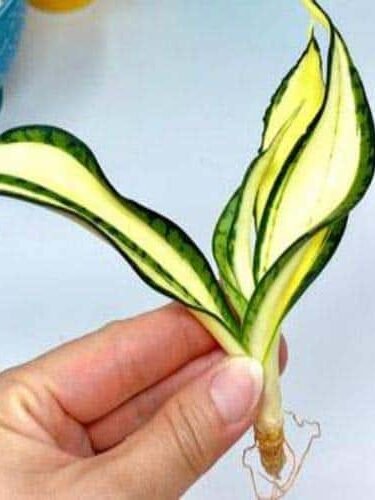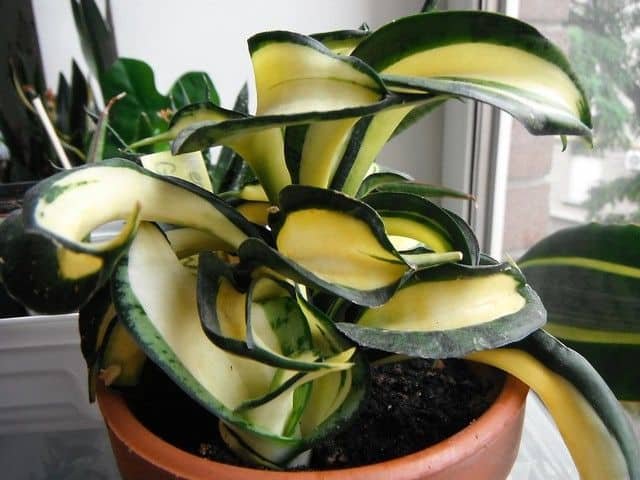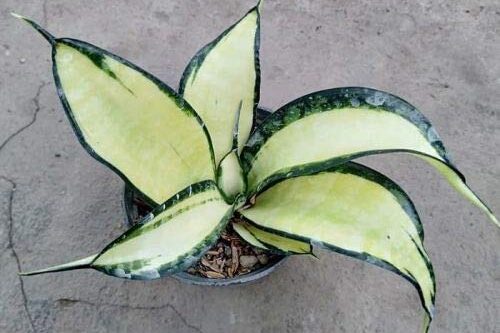There are many unique sansevieria varieties in this world. But when it comes to rare, sansevieria wendy golden is one of them.
From what to do with it once you’ve grown it to how to grow it, we’ll be discussing everything you need to know about this gorgeous and fascinating plant on my blog. Read on to learn more about this magnificent plant!
What Is Sansevieria Golden Wendy?
Sansevieria Henny Gold, also known as Sansevieria Golden Wendy, is a tropical houseplant and stemless succulent with twisted yellow bands that form a lovely rosette.
Sansevieria Henny Gold, also known as Sansevieria Golden Wendy, is a gorgeous, short-growing cultivar of Sansevieria Henny Gold that stays under a foot tall while it sends out new shoots and spreads into a cluster of leafy funnels.
You will receive one unique, imported Sansevieria Golden Wendy of equal size with your transaction. Sansevieria Golden Wendy is a favorite among collectors and hobbyists due to its gold and green twisted leaves.
The Size and Growth

Sansevieria Golden Wendy is small (about 6′′-8′′) and is suitable for both indoor and outdoor use. Depending on the amount of light it receives, the variegated leaf ranges from bright yellow with vertical green stripes to grey-green with dark green bands and a creamy yellow edge.
These leaves form a tight rosette that looks like a cross between a rose and a bird’s nest, earning it one of its nicknames and leading to it being mistaken for a bromeliad.
Flowering
The dwarf snake plant will flower if it becomes overcrowded or stressed. The flowers are sterile, tiny, and greenish-white in color. The blossoms are difficult to notice and yield seedless orange berries, although they have a lovely scent.
Light & Temperature
Direct sunshine or bright, indirect light are preferred by Sansevieria Golden Wendy. The amount of light it receives has a direct impact on its variegation. More light translates to a more appealing show. It will, however, survive low light at the expense of vibrancy and size.
Sansevieria Golden Wendy grows best in USDA hardiness zones 10-11, but it can also be grown inside at 60° to 73° Fahrenheit. If you think it isn’t getting enough air moisture, keep it away from vents and other drafts and offer it a water dish. It’s best not to mist this Sansevieria Golden Wendy because it’ll leave water spots on the leaves.
Watering And Fertilizing
Water this succulent only when the soil is absolutely dry, which happens every 14 days or so. Allow the plant to drain after watering it properly. This plant doesn’t need fertilizer, but in the spring and mid-summer, you can give it a tiny dose of general fertilizer.
Soil And Transplanting
As long as the soil is well-drained, your Sansevieria golden wendy will thrive in almost any type or quality of soil. You can also use a combination of cactus and normal potting soil. If necessary, perlite or coarse sand can be added to help with drainage.
About repotting sansevieria, this sansevieria cultivar tolerates root-bound conditions well and only needs to be repotted every 2 to 5 years at most. The plant will survive without the need for extra repotting or fertilization if it is given fresh soil once a year.
Grooming And Maintenance

To keep your Sansevieria golden wendy dust-free, give it a gentle wipe-down with a damp paper towel every now and then. Remove any flower spikes after their blossoms have gone, and trim back any dead or dying leaves as appropriate. Read more about how to take care of a sansevieria in our blog.
To Sum Up
Now, we admit that you are interested in Sansevieria golden wendy. Because of the small size, it’s perfect to place anywhere, and the beautiful color of the leaves is really eye-catching! We also have an article about walking sansevieria which is also one of the varieties of Sansevieria you might want to have.
Frequently Asked Questions
How can I grow Sansevieria Golden Wendy in my garden?
Late winter or early spring stem cuttings may be used to propagate Sansevieria Golden Wendy.
What are the benefits of Sansevieria Golden Wendy?
Because it needs very little water and sunlight, Sansevieria Golden Wendy is a popular houseplant. The flowers and leaves are also popular attractions.
What care should I take when growing S. Golden Wendy?
Only occasional watering is required for S. Golden Wendy, which is a very easy plant to grow. Before the old leaves fall off the stem, you should remove them to encourage new growth. Sansevieria stem cuttings may be taken in the spring or summer if you want to propagate your sansevieria.
What should I do with Sansevieria Golden Wendy once it’s grown?
Sansevieria Golden Wendy may be maintained in a pot or terrarium, although it grows to be around 2 feet tall over time.
Where can I find information about how to grow Sansevieria Golden Wendy?
There are many online resources that can be helpful when growing Sansevieria Golden Wendy. If you’re curious about this plant and want to try it out, make sure to read on!
If I grow Sansevieria golden wendy, what should I do with the flowers, leaves, and stems?
Sansevieria golden wendy’s leaves, blooms, and stems may all be composted.



